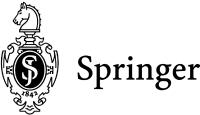
Mitchell M. Tseng and Frank T. Piller
 |
The
Customer Centric Enterprise: Advances in Mass Customization and Personalization
Mitchell M. Tseng and Frank T. Piller |
||
Over the past 25 years significant investments have been made in process technologies in an effort to increase productivity and efficiency in product development. However, the return on investment in these process technologies has not yielded the gains in productivity that would be expected. This chapter asserts that this is due to the injection of new process technologies and tools into old product development processes. Globalization and mass customization are also demanding higher levels of productivity. The solution to achieving effective returns in this area of product development lies in designing and implementing strategies that integrate and optimize the new process tools and technologies. Two primary product development strategies are emerging that integrate and optimize the new process tools; first, reconfiguration of product knowledge, artifacts and data, and second, the product continuum. The gathered data supports two conclusions. One is that product design processes that take advantage of reconfigurable models enjoy significant savings in time and cost in the model creation segment of the design process. The instantiation time for the reconfigurable models averages 3% of the time to create conventional models. As the size and/or complexity of the product increases, the potential benefit of reconfigurable models also increases. Another observation is that the reconfigurable template is an effective tool for organizing and administering design information in the process. The extra time spent setting up the reconfigurable models in the first design cycle is easily repaid through faster future design cycles, easier design information maintenance, and effective reconfiguration of previous work. Productivity as measured by reduced cycle times and increased throughput must be designed and built into the process. Our experience is showing that the keys are reconfigurable artifacts and product templates. |
 |
Springer
2003 ca. 535 p. 168 illus. ISBN 3-540-02492-1 |
Back to | ||
| www.mass-customization.de/cce | ||||